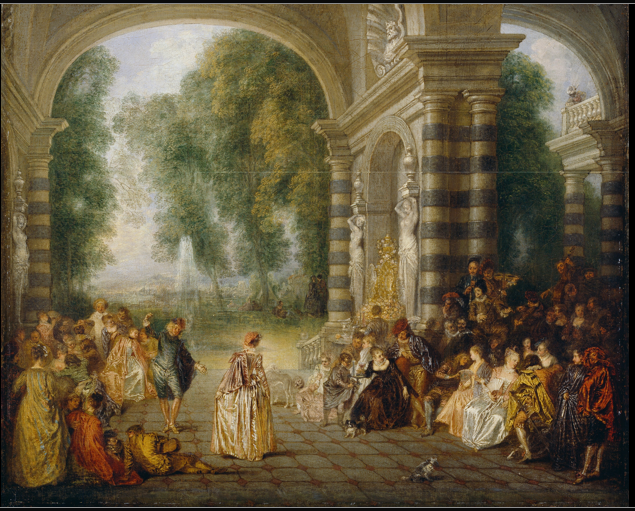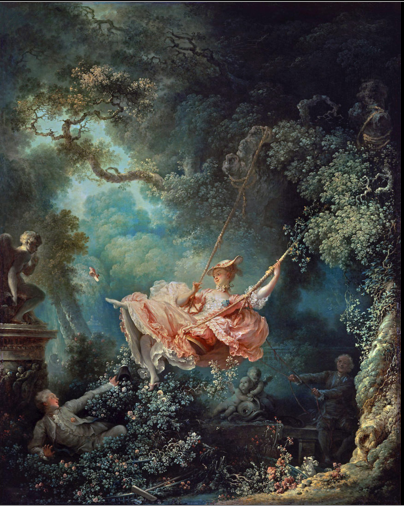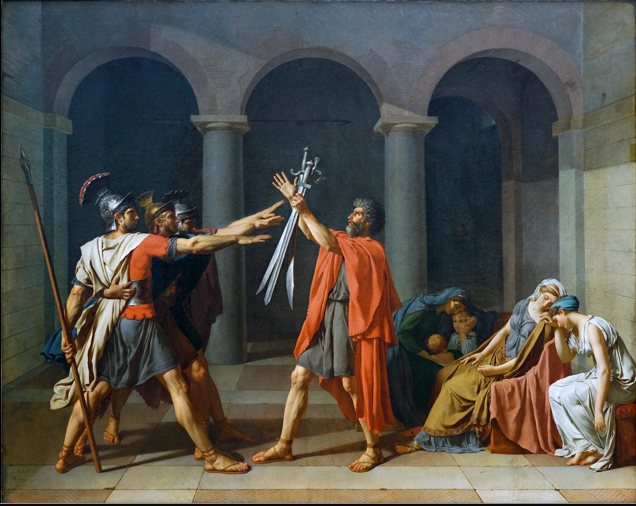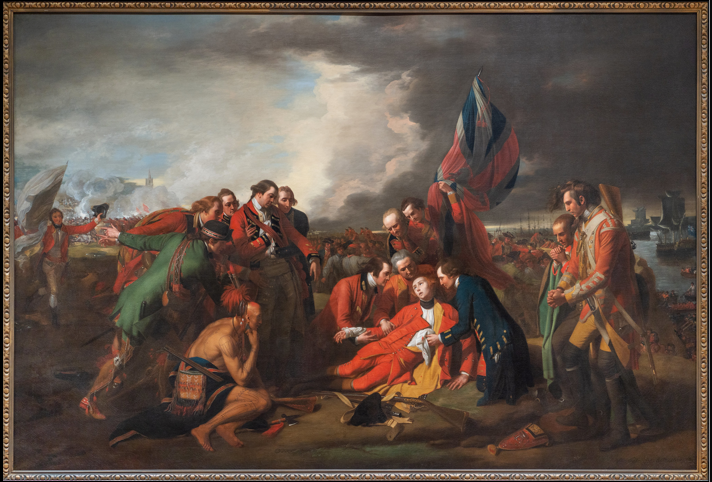Art History Unit 3
1/6
There's no tags or description
Looks like no tags are added yet.
Name | Mastery | Learn | Test | Matching | Spaced |
|---|
No study sessions yet.
7 Terms

Antonie Watteau, The Pleasures of the Ball (Les Plaisirs du Bal), c. 1715-17, oil on canvas, 65.2 × 52.5
What are the piece’s form, function, content, and context?
Form: lose feathery brushwork (trees not very defined), emphasis on pastel hues, very light, lack of interest in symmetry (arches not centered + no specific focal point, early rococo!
Function: seeks to have the viewer imagine the sensory issues of the scene, allows for an understanding of the cultural station at the time (shows that the french were able to have slaves in their houses), and draws attention to the alienation of black people)
Content: outdoor terrace, group of men and women expensively + colorfully dressed; scene to left shows couple dancing, people talking, people drinking; references to the cost of this pleasure with the two young black men (one watching from above the other almost swallowed in the crowd) wearing striped outfits to represent that they are servents (one is wearing a turban → shows exotisim)
Context: would have been placed outside, shows leisure activities; Watteau considered the father of rococo, lots of his commissions were for colonial investors (probably all had slaves)

Jean-Honoré Fragonard, The Swing, oil on canvas, 1767
What are the piece’s form, function, content, and context?
Form: Uses iconography, old man looking at younger woman who is looking at younger man who is looking back at her (makes a V), loaded symbols
Function: commissioned by a wealthy man to be put up in his country house, made to be look at intently
Content: enclosed garden (wall + gardening tools), three subjects: young man in bushes (secret lover), young woman on swing (wife), older man pulling the swing (husband); a dog (symbol of loyalty, barking angrily = knows of infidelity) and angel sculptures shushing/glaring at the dog
Context: later rococo, more innuendo and erotic undertones

Jacques-Louis David, Oath of the Horatii, 1784, oil on canvas, 3.3 × 4.25 m
What are the piece’s form, function, content, and context?
Form: 3 rounded arches (brothers on left, father in middle, women in final arch), brothers and father very rigid, whereas the movement in the women shows emotion; classical style (interest in the accuracy of the anatomy of the body)
Function: shows the moment before the battle between the Horatii (rome) and Coratii (alba) where the father of the horatii brothers is making them swear to fight for rome or die, history painting, supposed to show the viewer to protect their country (to resonate with the people at the time as we are nearing a revolution), comes from a roman legend
Content: three sons their father in the horatii family (from rome), and the weeping and distraut women are interconnected between the Horatii and the Coratii family (from the warring country alba) by either blood or marraige (so no matter who wins someone loses), shown as more complacent and like they can’t do anything to stop it (reflective of the time’s ideals that women couldn’t think outside the personal or familial)
Context: David has a classical education + traveled to rome for study; this work would have been displayed in the salon of the french academy (allowed for art to be displayed to gain potential patrons and criticism) that had to be open past its closing time because it was so busy

Benjamin West, The Death of General Wolfe, 1770, oil on canvas, 1526 × 214.5 cm
What are the piece’s form, function, content, and context?
Form: dramatic (clouds and lighting), Wolfe focal point
Function: history painting (though it departs from the norm with an almost contemporary event from the 7 years war)
Content: shows General Wolfe on a battlefield mortally injured, very carefully composed (wolfe almost posed like christ), surrounded by men (only one man was there when he actually died), native american posed like the thinker next to him, a person running in from the left side
Context: west was born in the americas then moved to italy to learn how to paint in european tradition, he found success in london; this is his most iconic painting
Academy
the french royal academy emphasized classical traditions, heirarchical genres of art, and presion in drawing, rejecting avant-garde tendencies
Heirarchy of Genres
History paintings: classical tradition, biblical, or allegorical subjects
Portraiture: likenesses
Genre Painting: scenes from everyday life
Landscapes: representations of real or imagined rural topography
Still life paintings: inanimate objects
Enlightenment
an intellectual movement where ideas around god, nature, and humanity were synthesized into a worldview, instigating developments in art, philosophy, and politics